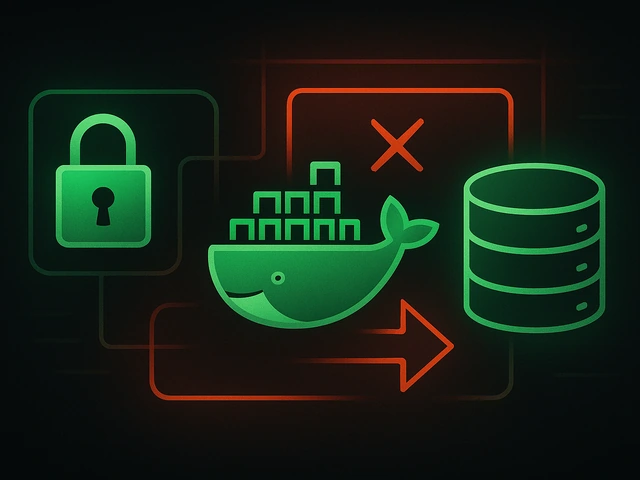
In the previous article, we considered several of the most popular operating systems that are usually chosen for installation on VPS servers. And today we want ...
3v-Hosting Blog
7 min read
The "Kernel Security Check Failure" is a notorious issue faced by many Windows users, often resulting in the dreaded Blue Screen of Death (BSOD). This error indicates that one or more critical data structures in the Windows kernel have become corrupted. As a critical component of the operating system, the kernel manages core functions such as process and memory management, and any failure here can lead to severe system instability. Understanding the root causes, diagnostics, and solutions for this error is essential for system administrators, IT professionals, and advanced users.
A kernel security check error is a type of blue screen error that occurs when the Windows operating system detects a corruption in the kernel. The kernel is the main part of the operating system, responsible for managing system resources and communications with hardware. When a kernel error occurs, it can indicate serious problems ranging from hardware failures to software corruption.
The error message usually looks like this:
Your PC ran into a problem and needs to restart. We're just collecting some error info, and then we'll restart for you.
Stop code: KERNEL_SECURITY_CHECK_FAILURE
BSOD Occurrence: The most apparent symptom is the blue screen displaying the "Kernel Security Check Failure" message.
System Crashes: Frequent crashes, especially when performing specific tasks like gaming, using intensive applications, or during startup/shutdown.
Performance Issues: Slow system performance, application freezes, and unexpected reboots.
Error Codes in Event Viewer: Specific error codes and messages related to kernel security checks can be found in the Windows Event Viewer.
Several factors can contribute to the Kernel Security Check Failure error. Understanding these causes can help in diagnosing and resolving the issue.
Memory (RAM) Problems: Faulty or mismatched RAM modules can lead to data corruption within the kernel.
Hard Drive Errors: Bad sectors, failing drives, or file system corruption on the hard drive can cause critical data structures to become unreadable or corrupt.
Overheating: Excessive heat can damage hardware components, leading to unpredictable behavior and kernel errors.
Corrupt System Files: Important system files that have become corrupted can disrupt kernel operations.
Driver Conflicts: Incompatible, outdated, or corrupt drivers can interfere with kernel processes.
Malware: Malicious software can corrupt system files or modify kernel data structures.
Software Conflicts: Conflicts between different software applications, especially those running at a low level (e.g., antivirus programs), can lead to kernel instability.
Accurate diagnosis is critical for effective resolution. Several diagnostic tools and methods can help pinpoint the cause of the Kernel Security Check Failure.
The Windows Event Viewer logs system events and can provide detailed error codes and messages related to kernel security check failures.
Open Event Viewer: Press Windows + X and select "Event Viewer".
Navigate to Windows Logs: Go to "Windows Logs" > "System".
Filter Events: Look for errors marked with red exclamation points, particularly those mentioning "Kernel" or "BugCheck".
Memory issues are a common cause of kernel errors. The Windows Memory Diagnostic tool can help identify problems with RAM.
Run Windows Memory Diagnostic: Press Windows + R, type mdsched.exe, and press Enter.
Restart and Check: Choose "Restart now and check for problems".
Review Results: After the system reboots, the diagnostic tool will check for memory issues and report any findings.
Hard drive issues can also cause kernel errors. Tools like CHKDSK can help identify and fix disk-related problems.
Run CHKDSK: Open Command Prompt as an administrator and type chkdsk /f /r followed by Enter.
Schedule Check: If prompted to schedule the check for the next restart, type Y and restart your computer.
Once the cause of the Kernel Security Check Failure is identified, appropriate steps can be taken to fix the issue. Here are several methods to resolve common causes.
Drivers are a frequent source of kernel issues. Ensuring all drivers are up-to-date can resolve many BSOD problems.
Open Device Manager: Press Windows + X and select "Device Manager".
Update Drivers: Right-click on each device, select "Update driver", and follow the prompts.
Reinstall Problematic Drivers: If updating doesn't work, try uninstalling the driver and then reinstalling it.
Corrupt system files can be repaired using the System File Checker (SFC) and Deployment Imaging Service and Management Tool (DISM).
Run SFC: Open Command Prompt as an administrator and type sfc /scannow. This will scan and repair corrupt system files.
Run DISM: If SFC doesn't fix the issue, run DISM /Online /Cleanup-Image /RestoreHealth to repair the system image.
A clean boot can help identify software conflicts by starting Windows with a minimal set of drivers and startup programs.
Open System Configuration: Press Windows + R, type msconfig, and press Enter.
Selective Startup: Under the "General" tab, select "Selective startup" and uncheck "Load startup items".
Disable Services: Go to the "Services" tab, check "Hide all Microsoft services", and then click "Disable all".
Restart: Restart your computer to see if the issue persists.
Malware can cause a variety of system issues, including kernel errors. Running a full system scan with a reputable antivirus program can identify and remove malicious software.
Outdated BIOS versions can cause hardware incompatibilities and kernel errors. Check your motherboard manufacturer's website for BIOS updates and follow their instructions carefully.
If the error persists after software troubleshooting, hardware issues might be the cause.
Test RAM Modules: Use tools like MemTest86 to perform a thorough test of your RAM.
Check Hard Drive: Use manufacturer-provided diagnostic tools to check the health of your hard drive.
Inspect Hardware: Ensure all hardware components are properly seated and free of dust and debris.
For persistent or complex issues, advanced troubleshooting steps might be necessary.
Windows creates dump files when a BSOD occurs, which can be analyzed to understand the cause of the crash.
Access Dump Files: These are usually located in the C:\Windows\Minidump folder.
Use WinDbg: The Windows Debugger (WinDbg) tool can analyze these dump files. Download it from the Microsoft website, open a dump file, and use the !analyze -v command to get detailed information.
Sometimes, recent Windows updates can cause instability. Rolling back to a previous version can help.
Open Settings: Go to Settings > Update & Security > Recovery.
Go Back to Previous Version: Click "Get started" under "Go back to the previous version of Windows 10".
As a last resort, a clean installation of Windows can resolve persistent issues by starting with a fresh system.
Backup Data: Ensure all important data is backed up.
Create Installation Media: Use the Windows Media Creation Tool to create a bootable USB drive.
Reinstall Windows: Boot from the USB drive and follow the on-screen instructions to reinstall Windows.
Preventative measures can help avoid future kernel errors and maintain system stability.
Keep Software Updated: Regularly update Windows, drivers, and applications to the latest versions.
Run Antivirus Scans: Perform regular scans to detect and remove malware.
Perform Disk Checks: Use tools like CHKDSK and defragmentation to maintain disk health.
Regularly Check Temperatures: Use monitoring tools to ensure that system temperatures remain within safe limits.
Inspect and Clean Hardware: Periodically check and clean hardware components to prevent dust buildup and overheating.
Install Trusted Programs: Only install software from reputable sources.
Avoid Software Conflicts: Be cautious when installing multiple low-level system utilities (e.g., antivirus programs) that might conflict.
Kernel security check failure is a critical issue that can significantly impact the stability and usability of your Windows system. By understanding the causes and implementing effective diagnostic and resolution strategies, users can reduce the risk of this error and keep their PC running smoothly. Regular maintenance and proactive monitoring are the key to preventing similar situations in the future, ensuring that both hardware and software components are operating optimally.

Learn how IP addresses work: IPv4 vs IPv6, public and private IPs, DNS resolution, routing, security basics, and how IPs are used in real server and cloud infra...

Accelerating WordPress at the Nginx level: correct PHP-FPM settings, try_files, static files, caching, Brotli, wp-login protection, and secure headers for stabl...

Effective backup strategies for Docker applications: how to protect volumes, data, and configurations while avoiding common mistakes, and quickly restore servic...